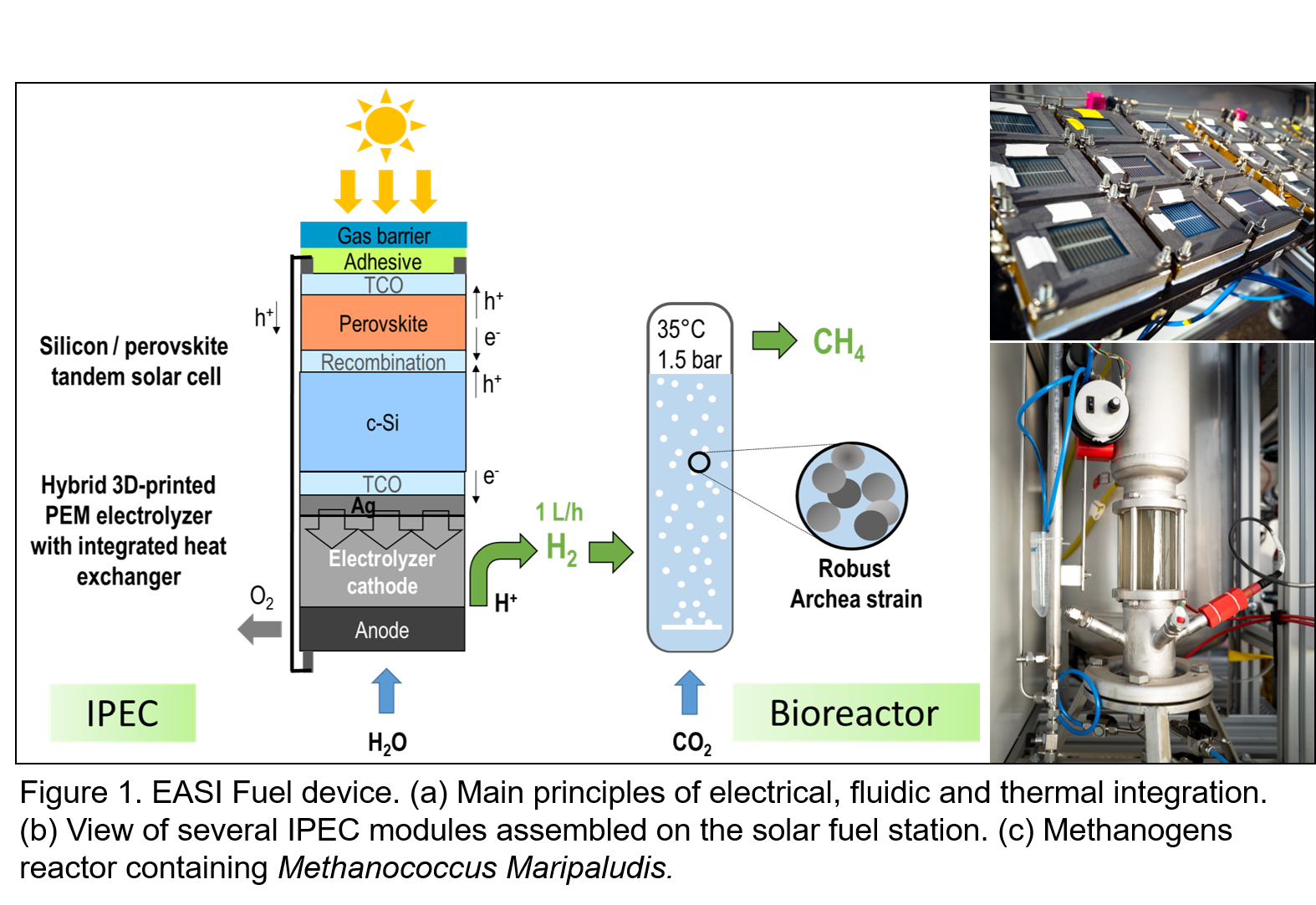2023 AIChE Annual Meeting
(655f) A Scalable Integrated Solar Device for the Autonomous Production of Synthetic Fuel
Authors
We present an autonomous solar integrated fuel station (EASI Fuel), with a photon capture surface2 of several hundreds of cm², resulting from an elaborate integration and scale-up process to couple a series of IPECs with a methanogenesis bioreactor. EASI Fuel makes full use of solar energy (both photovoltaic and thermal aspects) for methane production from CO2 and H2, reducing the carbon footprint in favor of sustainable economy.
The current communication focuses on two key points:
- what can be the advantages of electrical, fluidic and thermal integration in the transition from laboratory to pilot scale?
- how does the dispersion data of IPECs affect the performance of the overall device?
Electrochemical and photo-electrochemical measurements, confirm the correct functioning of 3D printed-hybrids IPEC modules; while biological characterizations underline the high degree of selectivity of the methane-producing microorganisms3. The results, after long-term outdoor experiments, highlight the robustness, the versatility and the stability of the solar fuel station, demonstrating the achievement of a Technology Readiness Level (TRL) of 5.
With a solar to hydrogen (STH) conversion efficiency of about 5%, and a peak production of 10 kWhCH4, which is remarkable compared to the state of the art, the EASI Fuel technology is seen as an interesting complement to biogas plants, and a promising route, toward sustainable fuels, for heavy transportation.
1 S. Tembhurne and S. Haussener, J. Electrochem. Soc., 2016, 163, H988âH998.
2 J. H. Kim, et al., Joule, 2019, 3, 2892â2894.

